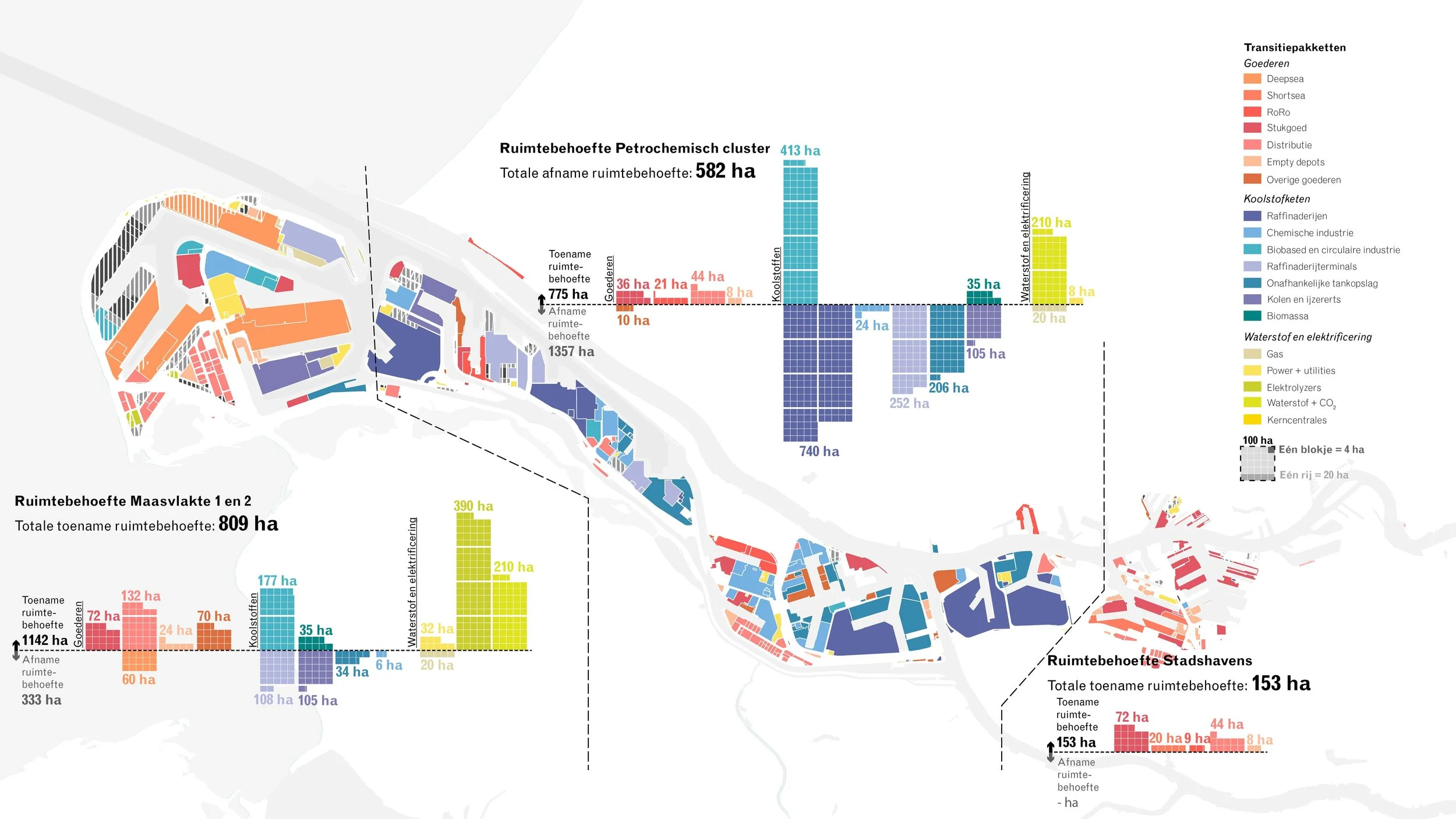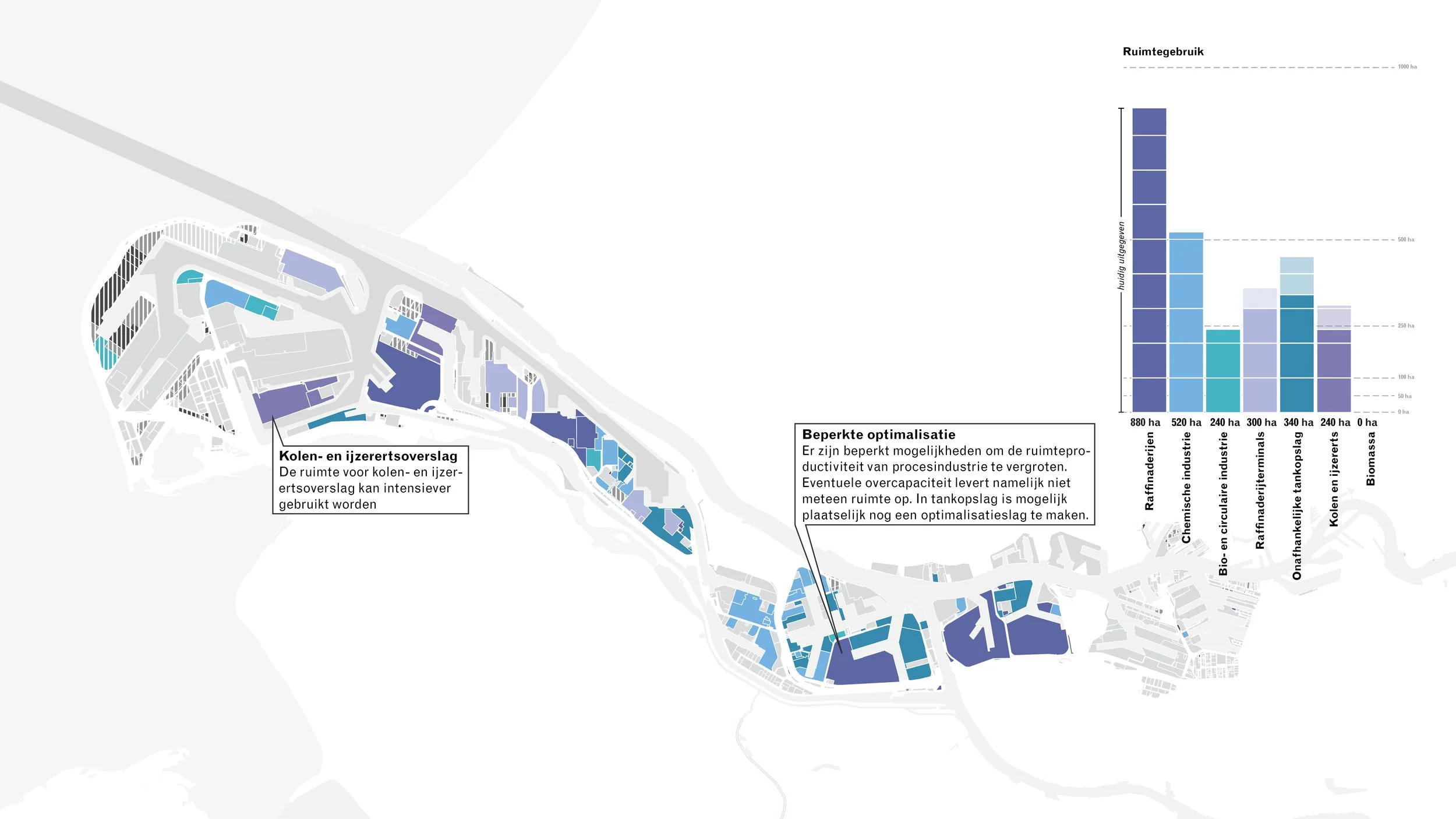
Spatial Use, Needs and Limits
In the port of Rotterdam
One of Europe’s most important industrial and logistical hubs is currently facing a bold ambition: to become the most sustainable and internationally competitive port-industrial complex in the world by 2050. However, a transition in energy, materials, and circularity requires space, which is becoming increasingly scare. This NOVEX research provides a comprehensive spatial exploration of current land use, future scenarios, and the risks of space shortages.
-
Location
Port of Rotterdam
Year
2024 - 2025
-
Energy transition, spatial development
-
Regional Strategies
-
Province of South Holland
-
Duong Bui, Mark Slierings, Rens Wijnakker
In order to translate economic and energy transition scenarios into spatial demand, we have examined the Rotterdam harbor across four main sub-areas: Maasvlakte, Europoort, Botlek-Vondelingenplaat, and the Stadshavens.
Together they form a complex ecosystem of 12,500 hectares, of which over 6,000 are industrial land. While a vast majority of this land is already in use, the remaining 500 hectares located on the Maasvlakte, are already earmarked for transition-related activities such as hydrogen, electrification, and circular industry.
The results show a wide range: in the most conservative scenario, overall demand could shrink by 1,780 hectares, while in more expansive pathways an additional 350 hectares would be required. Additionally, competing interests increasingly target the same scarce sites, intensifying pressure on strategic locations like the Maasvlakte.
Timing and Compatibility
A central insight from this research is the challenge of timing and compatibility. It is not a given that land released by the decline of fossil-based industries will become available when it is needed for new technologies. Contract durations, long redevelopment timelines, and costly decommissioning mean that plots will not be repurposed overnight.
It is also not certain that the physical characteristics of released plots, such as location, quay depth, or environmental zoning, will match the requirements of future users.
Based on the findings, the research formulates five main conclusions:
There is a real risk of structural space shortage by 2050, although outcomes depend heavily on global market and policy developments.
Difference in timing between space release and space demand create temporary bottlenecks.
Mismatches between the type of available plots and the needs of new users reduce flexibility.
Strategic choices must be made about the last remaining free plots: not every initiative can be accommodated, and prioritization is essential.
The Europoort and Botlek areas represent the central transformation challenge, requiring a dedicated transition strategy focused on acceleration, sequencing, and remediation.
Shaping the Future of Europe’s largest port
This report is not a blueprint or decision-making document but a foundation for informed choices. By visualizing the pressures, mapping scenarios, and clarifying trade-offs, the study enables stakeholders to confront the reality of spatial scarcity and to navigate the difficult but necessary choices ahead.
Ultimately, the Rotterdam port stands at a crossroads. Its ambition to become a sustainable world port by 2050 is achievable, but only if space, both physical and strategic, is managed wisely. That means prioritizing transition-related activities, intensifying existing land use, and, if necessary, considering seaward expansion once all other options are exhausted.
The question is not whether change will come, but how the scarce resource of space will be used to shape the future of Europe’s largest port.


